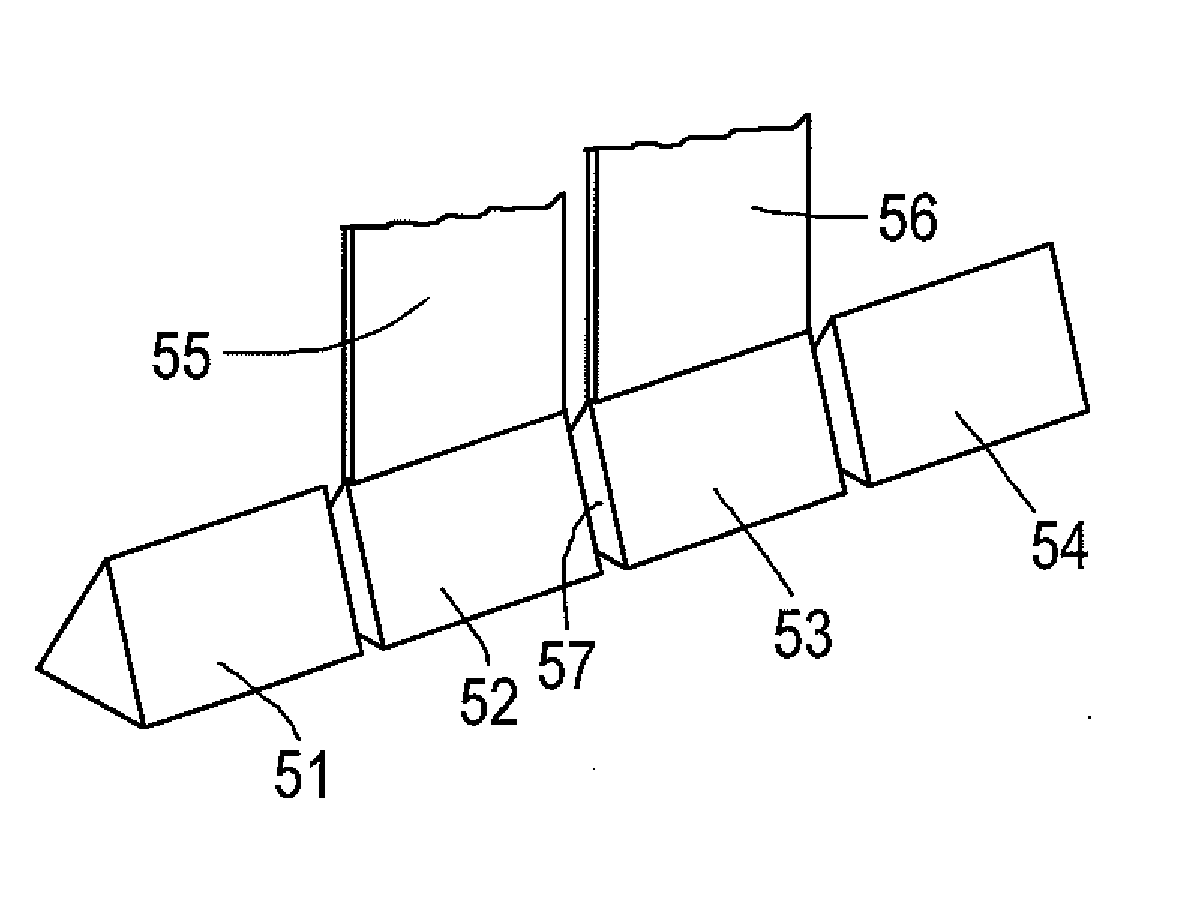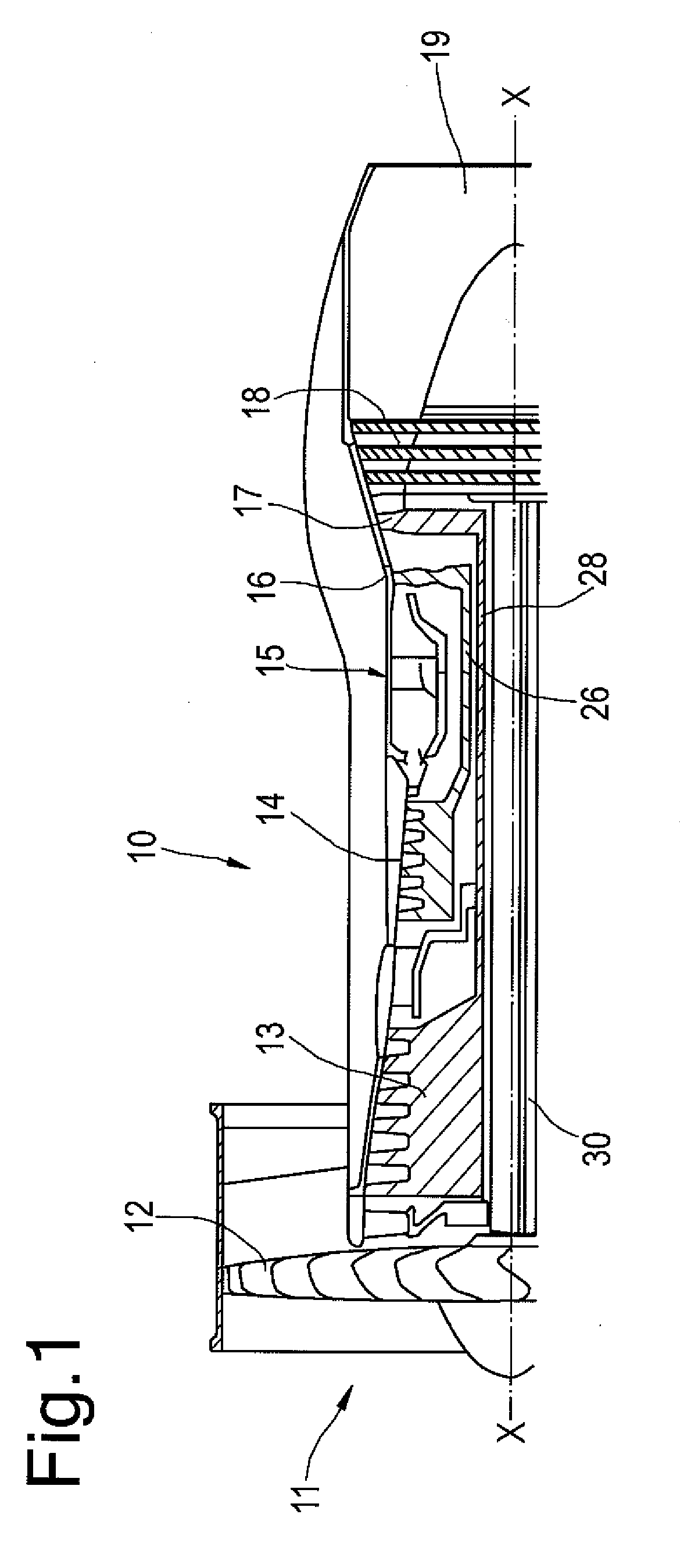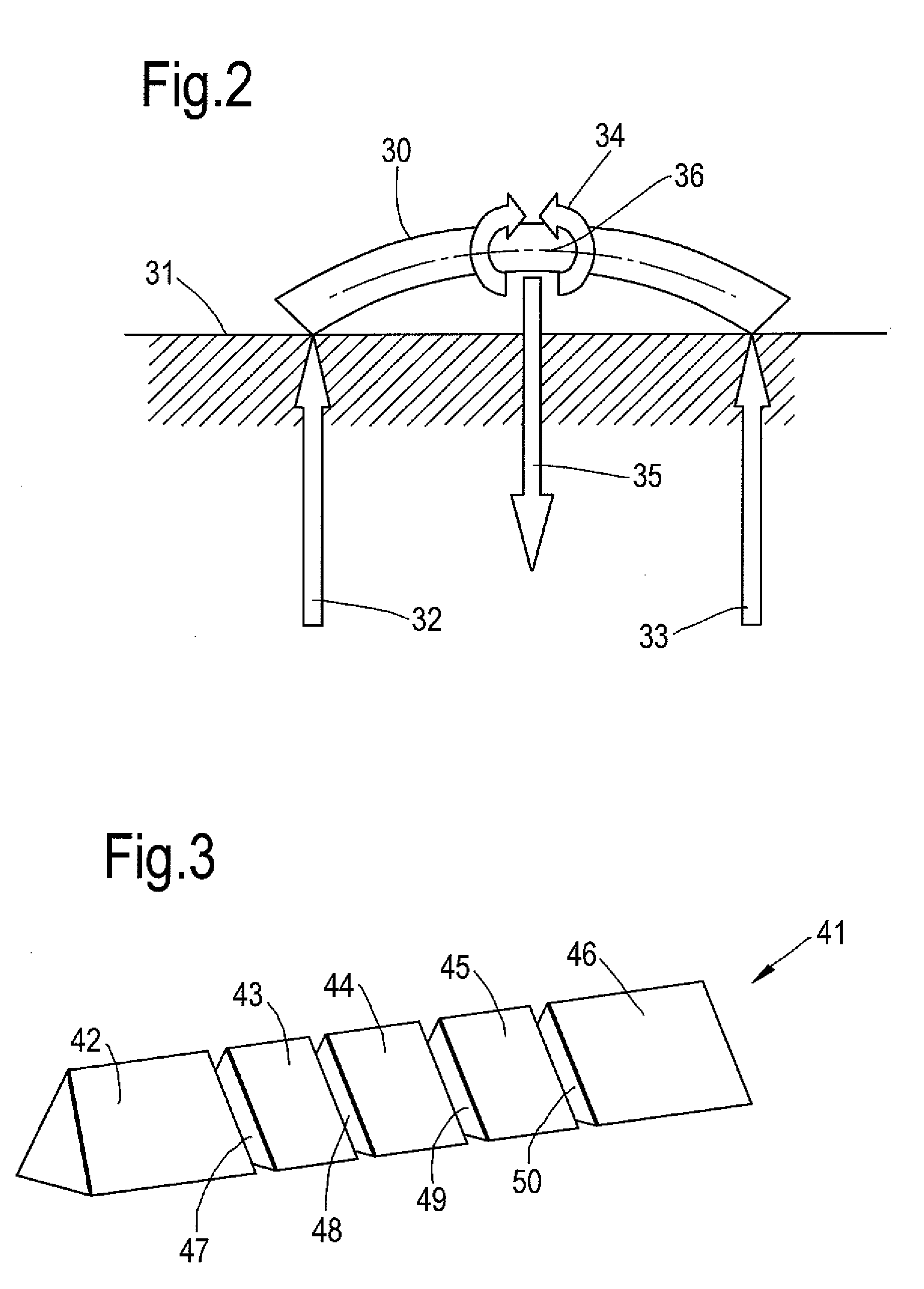Blade and a method for making a blade
a blade and blade technology, applied in the field of blades, can solve the problems of increasing maintenance and replacement costs, shortening affecting the service life of the blade,
- Summary
- Abstract
- Description
- Claims
- Application Information
AI Technical Summary
Problems solved by technology
Method used
Image
Examples
Embodiment Construction
[0023]In accordance with the invention a root section for a blade for utilisation in gas turbine engines is constructed and manufactured to incorporate one or more shear layers. These shear layers are provided generally within a core defining a wedge in the root. Generally, the shear layers are located between neighbouring material in order to define parts which are frangible with respect to each other. Typically the layers are created through a plurality or set of segments associated together with a disjoint or slip layer between them. This disjoint or slip layer can be created through provision of a layer of non-adhesive solid, liquid or gel such as a silicon paste. In such circumstances the disjoint or slip layer is non-adhesive to the respective parts defining the core or side by side segments. An alternative would be to provide a layer of lower strength material which either crumbles, shatters or shears when subject to tension. An example of such a lower strength material may b...
PUM
| Property | Measurement | Unit |
|---|---|---|
| Weight | aaaaa | aaaaa |
| Adhesivity | aaaaa | aaaaa |
| Surface | aaaaa | aaaaa |
Abstract
Description
Claims
Application Information
 Login to View More
Login to View More - R&D
- Intellectual Property
- Life Sciences
- Materials
- Tech Scout
- Unparalleled Data Quality
- Higher Quality Content
- 60% Fewer Hallucinations
Browse by: Latest US Patents, China's latest patents, Technical Efficacy Thesaurus, Application Domain, Technology Topic, Popular Technical Reports.
© 2025 PatSnap. All rights reserved.Legal|Privacy policy|Modern Slavery Act Transparency Statement|Sitemap|About US| Contact US: help@patsnap.com



